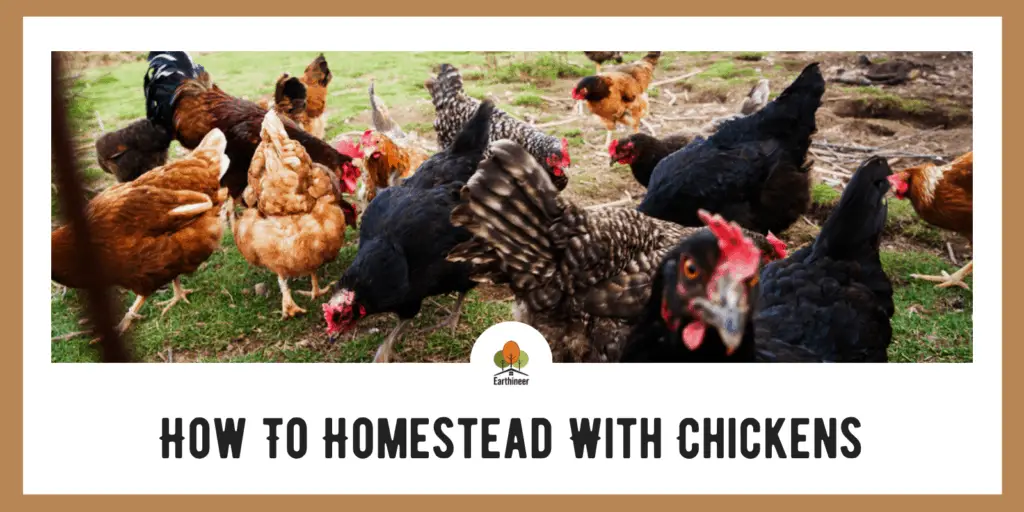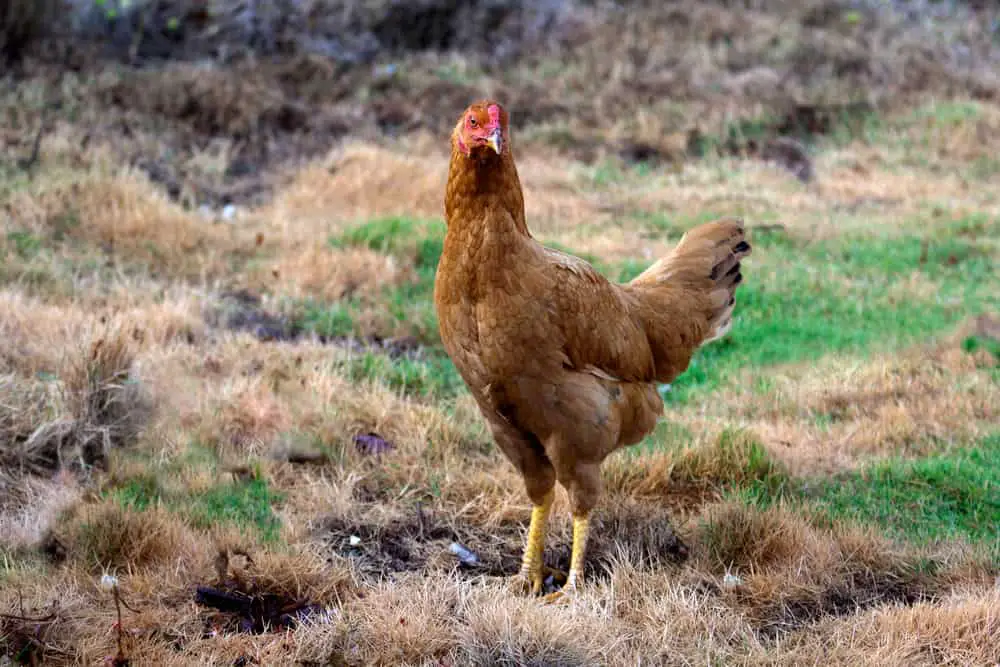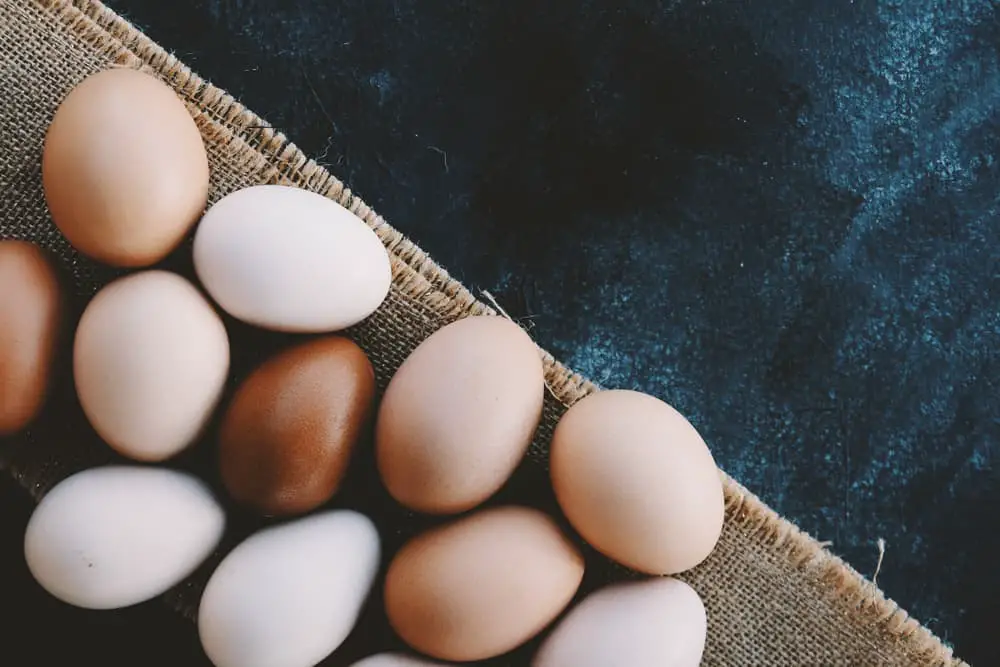If there is one thing that homesteaders are familiar with, it’s chickens. This bird is unquestionably the most popular livestock animal to have for those living off the grid.

Chickens can be the most useful livestock animal on a homestead due to its versatility in what it can offer.
It’s also very simple to raise, making it an excellent bird for beginner homesteaders. Plus, they have a decent profit margin if you plan to make money breeding them.
However, if you do not know what you’re doing when you first get into raising chickens, you can end up wasting lots of time.
There are so many breeds of birds, different sizes, and various egg-laying volumes to consider before diving in. So, here’s how to homestead with chickens!
How To Homestead With Chickens
Study The Breed Well
I have had several breeds of chickens. Many of them have very different personalities, various egg-laying abilities, and some are better for meat, often called “meat birds.”
This is why I recommend that you study the breed before you get it and study it well.
For example, the Rhode Island Red is one of the most popular birds in the states due to its exceptional egg-laying ability.
They are also magnificent meat birds, so they’re an all-around good chicken for anyone and any sized coop. However, they’re not the best for just egg-laying or just as a meat bird.
Breeds such as the Barred Plymouth Rock can lay nearly one egg per day, with a rest day every week or so.

The Cornish Cross is much better used as a meat bird, which is why you should evaluate what’s most important to you.
What’s more important to you, an all-around bird, an egg bird, or one utilized for its meat? These types of questions can make or break a homestead if it’s “in business” or relies on poultry.
Determine Your Free Space
The deciding factor in what direction your chicken raising career will go in is how much room you have to home the birds. Many people reading this live in the suburbs, which is fine.
However, you have less space, so you want to choose a bird that is okay with smaller spaces. If you have not noticed, some breeds can get big, so this is important to think about.
For those that have plenty of room, there isn’t much preparation needed. I strongly advise giving chickens at least 1x1x1 of space per head, 10x10x10 at a minimum.
Never stick with anything less, we want the chickens to live a happy, healthy life, and if you’re going to have them for dinner, it’ll taste better, so take that into consideration as well
I also recommend putting a walkway through the middle of the pen if it’s of larger size.
I’ve done this, and it’s an absolute lifesaver! I also placed doors in mine, though my coop grew to 30+ pens.
Build The Coop
The chicken coop structure is also an essential part of raising chickens. Moreover, it’s even more important for a homestead.
A chicken coop used for a homestead is presumably going to home chickens used for food, be it for poultry or eggs. This means that the chicken coop should be easily accessible.
You should make sure you’re able to walk through the pen to each corner, as eggs may be scattered throughout.
Additionally, if you plan on letting the hens naturally hatch chicks, you’ll need easy access to those areas as well. To help condense this to one area, build a roost in certain areas of the pen.
I’ve always used a small tree, three or four inches in diameter, and ran it the length of the pen. This almost always makes sure that the eggs are laid near the roost.
Furthermore, the coop should be structurally strong, safe from coyotes and other wild prey.
To combat this, bury the fence two feet below ground level to prevent prey from digging under quickly.
The fence itself should be strong enough to stop yourself from pushing through, and the roof should never, ever be made from a mesh of any kind.
Determine Its Use
The next essential part of homesteading with chickens is knowing what they’ll be utilized for. If they’re going to be a small project for your kids, stop here.
However, if they’re going to provide food, then you’ll need to determine the breed.
As mentioned above, some breeds excel at laying eggs, while others excel at providing poultry, and some great at both, but not the best.
If you plan to use them for poultry, go for a breed that grows fast and has a low disease and infection rate. Moreover, choose a breed that grows into a large size.
For those primarily looking for an egg bird, opt for a chicken that can lay up to 85% of the year at a minimum. Some of you will want a chicken good at both to supplement your food supply.
If this is the case, the Rhode Island Red is the best choice. You’ll also have it easy to breed this particular breed.
Making Money
There are several ways to make money with chickens on a homestead.
The most popular way (and my favorite) is by breeding them and selling the junior birds, rotating the old out with the new every five or so years.
Breeding chickens can not only net you poultry when needed but can be sold very easily at farmers’ markets, auctions, and more.
The Cornish Cross is a good choice for a meat chicken, as they grow fast and into large birds. However, breeding chickens for a decent return means you’ll need a lot of them.
I suggest the first year sticking with less than twenty-five chickens, so you’re able to learn the ropes of breeding. After this, you can scale up.

If you play your cards right, you might just be able to make a living off breeding alone.
You can also sell their eggs, which can net a decent side income or help pay for feeding the chickens.
You can sell eggs to friends, family, farmers’ markets, and more. Chickens sell fast, take that as a promise; they’re a very fail-safe bird.
Frequently Asked Questions
How Many Chickens Do I Need?
However, if you have room, you can have as many as you like. The needs are going to depend on what you’re aiming for.
If you plan to use them for poultry, a hundred or so should do fine. For eggs, 25 should be plenty. For breeding and selling, the more, the better. There is no direct answer.
How many Chickens Are Suggested For 1 Acre?
I recommend giving them more room as the higher the chicken density, the harder it is to clean, maintain sterile feed and water, and more.
Like any other animal, chickens should never be stuffed wing to wing; this asks for trouble.
Should I Let The Chickens Free Roam?
Occasionally, a few may roam away but typically come back before dark or in the peak of the morning. However, if you live in the suburbs, keep them in a pen while you’re away.
This is primarily because of dogs. If a chicken flies into another individual’s backyard that happens to have a dog, it may not end well.
Verdict
Raising chickens can be so fun that people pay as a luxury to raise them for pets. This bird is one of the most valuable on any homestead, as it can offer you poultry, eggs, and money.
The best part is that they’re straightforward to raise! Plus, they’re perfect for small areas. The biggest recommendation of mine is to study which breed suits you best.
There are dozens that I’d recommend, which is why I did not include in-depth looks here. The versatility of this bird is truly outstanding.
If you’re new to homesteading, adding chickens to your property is a good choice.
Just make sure to study the breed, coop size and look into caring for them, such as antibiotic care or disease control.